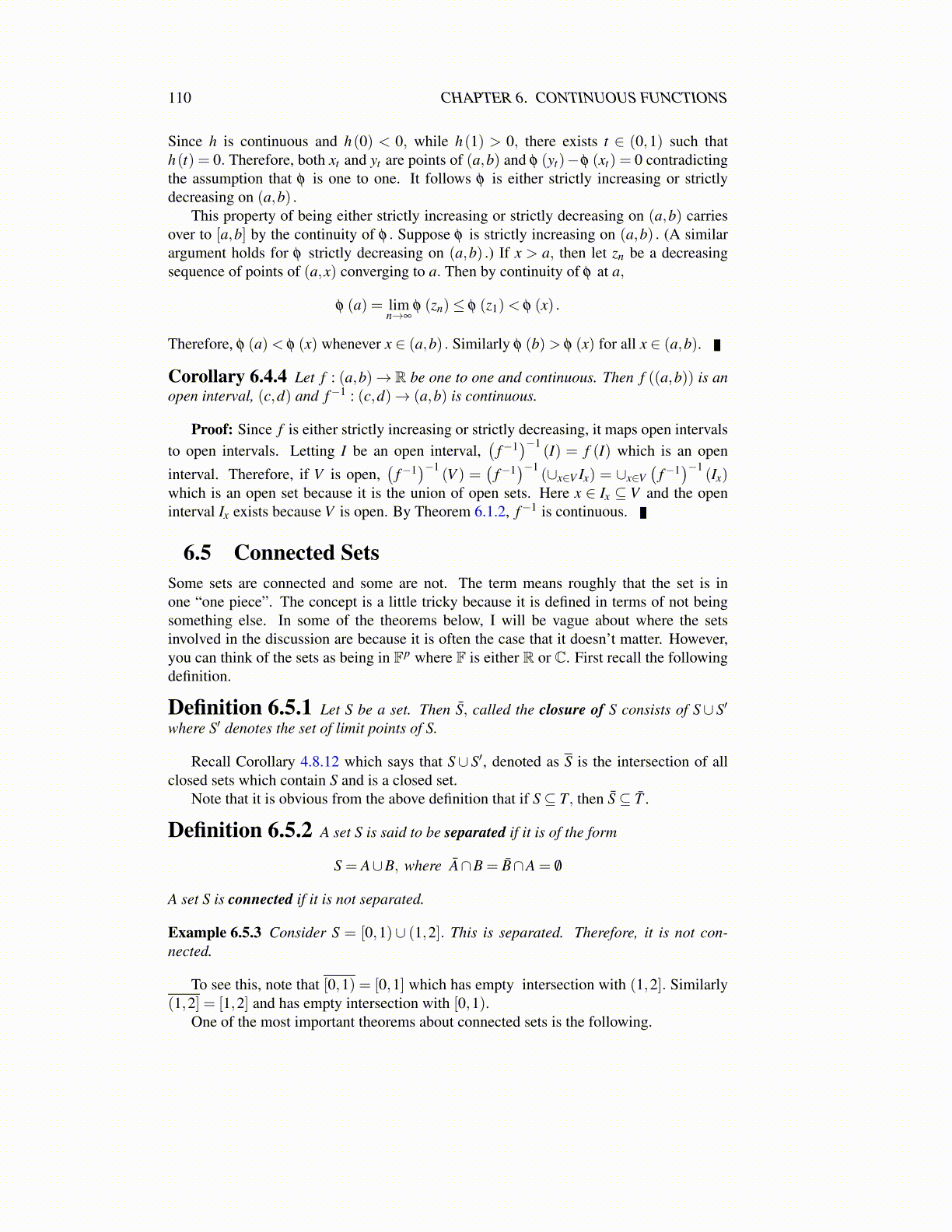
110 CHAPTER 6. CONTINUOUS FUNCTIONS
Theorem 6.5.9 Let U be an open set on R. Then each connected component isopen. Thus U is an at most countable union of disjoint open intervals.
Proof: Let C be a connected component of U . Let x ∈ C. Since U is open, thereexists δ > 0 such that (x−δ ,x+δ ) ⊆U. Hence this open interval is also contained in Cbecause it is connected and shares a point with C which equals the union of all connectedsets containing x. Thus each component is both open and connected and is therefore, anopen interval. Each of these disjoint open intervals contains a rational number. Therefore,there are countably many of them because there are countably many rational numbers.
That the rational numbers are at most countable is easy to see. You know the integers arecountable because they are the union of two countable sets. Thus Z×(Z\{0}) is countablebecause of Theorem 3.2.7. Now let θ : Z× (Z\{0})→Q be defined as θ (m,n)≡ m
n . Thisis onto. Hence Q is at most countable. This is sufficient to conclude there are at mostcountably many of these open intervals.
To emphasize what the above theorem shows, it states that every open set in R is thecountable union of open intervals. It is really nice to be able to say this.
6.6 Exercises1. Give an example of a continuous function defined on (0,1) which does not achieve
its maximum on (0,1) .
2. Give an example of a continuous function defined on (0,1) which is bounded butwhich does not achieve either its maximum or its minimum.
3. Give an example of a discontinuous function defined on [0,1] which is bounded butdoes not achieve either its maximum or its minimum.
4. Give an example of a continuous function defined on [0,1)∪ (1,2] which is positiveat 2, negative at 0 but is not equal to zero for any value of x.
5. Let f (x) = x5 + ax4 + bx3 + cx2 + dx+ e where a,b,c,d, and e are numbers. Showthere exists real x such that f (x) = 0.
6. Give an example of a function which is one to one but neither strictly increasing norstrictly decreasing.
7. Show that the function f (x) = xn−a, where n is a positive integer and a is a number,is continuous.
8. Use the intermediate value theorem on the function f (x) = x7−8 to show 7√
8 mustexist. State and prove a general theorem about nth roots of positive numbers.
9. Prove√
2 is irrational. Hint: Suppose√
2 = p/q where p,q are positive integers andthe fraction is in lowest terms. Then 2q2 = p2 and so p2 is even. Explain why p = 2rso p must be even. Next argue q must be even.
10. Let f (x) = x−√
2 for x ∈ Q, the rational numbers. Show that even though f (0) <0 and f (2) > 0, there is no point in Q where f (x) = 0. Does this contradict theintermediate value theorem? Explain.